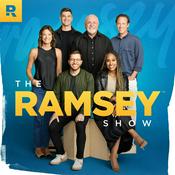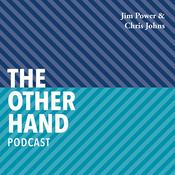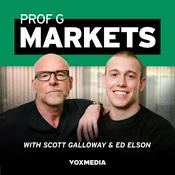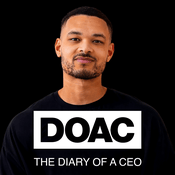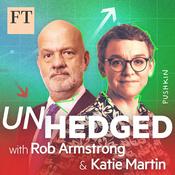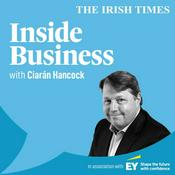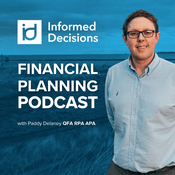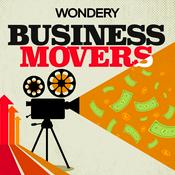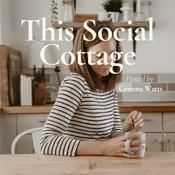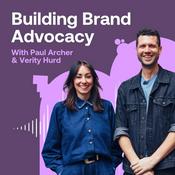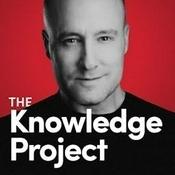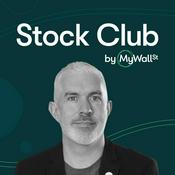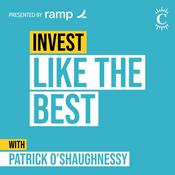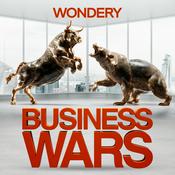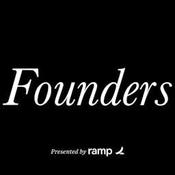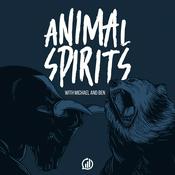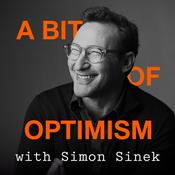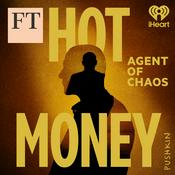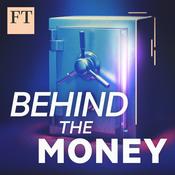Available Episodes
5 of 143
- Windsor Great Park Illuminated: Designing Experiences That Draw Guests Back Year After Year - Rob Paul and Kathryn StaffordStep into the woods with us for a behind-the-scenes look at one of the UK’s most iconic winter light trails: Windsor Great Park Illuminated.In this episode of Skip the Queue, Paul Marden is joined on-site by Rob Paul, Design Director at LCI Productions, and Kathryn Stafford, Senior Events Manager at IMG Events, to discuss how this 2.2km light trail continues to evolve, surprise and delight hundreds of thousands of visitors each year.Rob and Kathryn reveal how they transform a natural woodland into a breathtaking immersive world — all while protecting wildlife and crafting stories that keep guests coming back year after year.You’ll discover:What’s new for the 2025 trailThe creative process behind reinventing the experience annuallyThe challenges of designing large-scale AV in a protected natural landscapeHow iconic Instagram moments are balanced with quieter storytellingBrand-new characters, narratives and festive surprisesTrends in repeat visitation and evolving guest expectations Show References: Windsor Great Park Illuminated https://www.windsorilluminated.com/tickets/ Rob Paul - Design Director, LCI Productionshttps://www.linkedin.com/company/lci-productions-ltd/https://www.linkedin.com/in/rob-paul-7a4ab417/ Kathryn Stafford - Senior Events Manager, IMG Events / PWRhttps://www.linkedin.com/company/img/https://www.linkedin.com/in/kathryn-stafford-7504241b/ Skip the Queue is brought to you by Merac. We provide attractions with the tools and expertise to create world-class digital interactions. Very simply, we're here to rehumanise commerce. Your host is Paul Marden.If you like what you hear, you can subscribe on iTunes, Spotify, and all the usual channels by searching Skip the Queue or visit our website SkiptheQueue.fm.If you've enjoyed this podcast, please leave us a five star review, it really helps others find us. And remember to follow us on LinkedIn. We have launched our brand-new playbook: ‘The Retail Ready Guide to Going Beyond the Gift Shop’ — your go-to resource for building a successful e-commerce strategy that connects with your audience and drives sustainable growth. Download your FREE copy here--------33:16
- Attraction Trends 2026 and insights from the TEA Global Experience Index - Melissa Oviedo, Martin Palicki and Edmond ChihIn this episode of Skip the Queue, Andy Povey is joined by Melissa Oviedo (TEA), Martin Palicki (InPark Magazine), and Ed Chih (ECA) to discuss the TEA Global Experience Index and trends shaping the attractions industry in 2026.Key Topics Covered:Overview of the TEA Global Experience Index and global attendance trendsShifts in guest expectations and evolving experiencesRise of immersive IP-driven experiencesImportance of reinvestment for long-term successStrategies to compete for guest attention and engagementRole of storytelling and brand integration in attractionsGrowth of cruise lines and location-based entertainmentInsights for operators, developers, designers, and storytellers Show References: Download the TEA Global Experience Index™ Report: https://www.teaconnect.org/tea-global-experience-indextm Melissa Oviedo, Chief Executive Officer, Themed Entertainment Association (TEA)https://www.teaconnect.org/ https://www.linkedin.com/in/melissa-oviedo-ruminot-90a63228/ Martin Palicki, Publisher of InPark Magazinehttps://www.inparkmagazine.com/https://www.linkedin.com/in/inparkmagazine/Edmond Chih, Director, Entertainment & Cultural Advisors (ECA)https://www.entertainmentandculture.com/ Skip the Queue is brought to you by Crowd Convert. We provide attractions with the tools and expertise to create world-class digital interactions. Very simply, we're here to rehumanise commerce. Your host is Andy Povey.If you like what you hear, you can subscribe on iTunes, Spotify, and all the usual channels by searching Skip the Queue or visit our website SkiptheQueue.fm.If you've enjoyed this podcast, please leave us a five star review, it really helps others find us. And remember to follow us on LinkedIn. We have launched our brand-new playbook: ‘The Retail Ready Guide to Going Beyond the Gift Shop’ — your go-to resource for building a successful e-commerce strategy that connects with your audience and drives sustainable growth. Download your FREE copy here--------44:33
- When VFX meets visitor attractions - Rob Liddell and Simon ClarkeAndy Povey is joined by two guests at the forefront of this space: Rob Liddell, Executive Producer at BBC Studios Science Unit, and Simon Clarke, Creative Director and Founder of Moonraker VFX. Fresh from announcing their new creative partnership, they’re here to share what happens when world-class storytelling meets cutting-edge visual effects in the world of immersive experiences. Show References: Rob Liddell, Executive Producer at BBC Studios Science Unithttps://productions.bbcstudios.com/our-production-brands/the-science-unit/https://www.linkedin.com/in/rob-liddell-171639137/ Simon Clarke, Creative Director and Founder of Moonraker VFXhttps://moonrakervfx.com/https://www.linkedin.com/in/simon-clarke-07ba9146/ Skip the Queue is brought to you by Crowd Convert. We provide attractions with the tools and expertise to create world-class digital interactions. Very simply, we're here to rehumanise commerce. Your host is Andy Povey.If you like what you hear, you can subscribe on iTunes, Spotify, and all the usual channels by searching Skip the Queue or visit our website SkiptheQueue.fm.If you've enjoyed this podcast, please leave us a five star review, it really helps others find us. And remember to follow us on LinkedIn. We have launched our brand-new playbook: ‘The Retail Ready Guide to Going Beyond the Gift Shop’ — your go-to resource for building a successful e-commerce strategy that connects with your audience and drives sustainable growth. Download your FREE copy here--------41:56
- How to Engage All the Senses: Building More Immersive AttractionsToday’s attractions need to do more than look amazing — they need to feel, sound, and even smell unforgettable. In this episode, we explore how to go beyond the visual and bring audio, scent and motion to the forefront of the guest experience. Paul Marden is joined by Liam Findlay, Theme Park and Museum Scenting Consultant from AromaPrime Themed Scents; David Wakefield Director and Co-founder of On the Sly; and Matt Clarkson, Creative Director of Simworx. Show References:Liam R. Findlay – Theme Park & Museum Scenting Consultant, AromaPrime Themed ScentsWhy smell is a form of mind control, with Liam Findlayhttps://aromaprime.com/https://www.linkedin.com/in/liam-r-findlay/David Wakefield – Director & Co-founder, ON THE SLYhttp://www.onthesly.comhttps://www.linkedin.com/in/davidonthesly/Matt Clarkson – Creative Director, Simworxhttp://www.simworx.co.ukhttps://www.linkedin.com/in/matt-clarkson-a42a95124/ Skip the Queue is brought to you by Crowd Convert. We provide attractions with the tools and expertise to create world-class digital interactions. Very simply, we're here to rehumanise commerce. Your host is Paul Marden.If you like what you hear, you can subscribe on iTunes, Spotify, and all the usual channels by searching Skip the Queue or visit our website SkiptheQueue.fm.If you've enjoyed this podcast, please leave us a five star review, it really helps others find us. And remember to follow us on LinkedIn. We have launched our brand-new playbook: ‘The Retail Ready Guide to Going Beyond the Gift Shop’ — your go-to resource for building a successful e-commerce strategy that connects with your audience and drives sustainable growth. Download your FREE copy here--------40:18
- Reflect. Adapt. Thrive - Science and Discovery Centres the next 25 years.In today’s episode, recorded live at the National Science and Media Museum during the Association for Science and Discovery Centres Annual Conference 2025, we’re exploring what’s on the horizon for Science and Discovery Centres right now, over the next 5 years, and looking even further ahead to the next 25 years.It’s a throwback to the break between Seasons 6 and 7, when Paul Marden was invited to the ASDC National Conference in Bradford, at the height of the Bradford City of Culture celebrations. It was Paul’s first time in Bradford, but not his first ASDC conference, and this one was an absolute standout.At the end of the first day, Paul gathered a brilliant panel of delegates to unpack the conference’s central theme: the Now, Next, and Future for Science Centres.Joining Paul on the panel were:Jo Quinton-Tulloch, Director, National Science and Media MuseumDavid Jones, Community Engagement Manager, International Centre for LifeNatalie Whitehead, Founder and Director, Exeter Science CentreStephen Breslin, CEO, Glasgow Science Centre and Chair of the Association for Science and Discovery Centres ASDCShaaron Leverment, CEO, Association for Science and Discovery Centres ASDCLet’s head back to Bradford for a fascinating conversation about innovation, engagement, and the long-term vision shaping the future of science discovery in the UK. Show references: Jo Quinton-Tulloch - Director, National Science and Media Museumhttps://www.scienceandmediamuseum.org.uk/https://www.linkedin.com/in/jo-quinton-tulloch-22503791/David Jones, Community Engagement Manager, International Centre for Lifehttps://www.life.org.uk/https://www.linkedin.com/in/david-jones-031570198/Natalie Whitehead, Founder and Director, Exeter Science Centrehttps://exetersciencecentre.org/https://www.linkedin.com/in/natalie-whitehead-17323ba9/Stephen Breslin, CEO, Glasgow Science Centre and Chair of ASDChttps://www.glasgowsciencecentre.org/https://www.linkedin.com/in/stephen-breslin-b331135b/Shaaron Leverment - CEO, Association for Science and Discovery Centres ASDChttps://www.sciencecentres.org.uk/events/asdc-conference-2025/https://www.linkedin.com/in/shaaron-leverment-74b53b50/ Skip the Queue is brought to you by Crowd Convert. We provide attractions with the tools and expertise to create world-class digital interactions. Very simply, we're here to rehumanise commerce. Your host is Paul Marden.If you like what you hear, you can subscribe on iTunes, Spotify, and all the usual channels by searching Skip the Queue or visit our website SkiptheQueue.fm.If you've enjoyed this podcast, please leave us a five star review, it really helps others find us. And remember to follow us on LinkedIn. We have launched our brand-new playbook: ‘The Retail Ready Guide to Going Beyond the Gift Shop’ — your go-to resource for building a successful e-commerce strategy that connects with your audience and drives sustainable growth. Download your FREE copy here--------45:13
More Business podcasts
Trending Business podcasts
About Skip the Queue
Skip the Queue is for visitor attraction owners, directors and suppliers who want to improve their organisations and deliver a better experience for their guests. Each episode we speak with inspiring industry experts who share their knowledge of what really makes an attraction successful.
This podcast is brought to you by Merac. We're here to help attractions unlock growth with innovative solutions, expert insights, and customer-first strategies.
Podcast websiteListen to Skip the Queue, Odd Lots and many other podcasts from around the world with the radio.net app

Get the free radio.net app
- Stations and podcasts to bookmark
- Stream via Wi-Fi or Bluetooth
- Supports Carplay & Android Auto
- Many other app features
Get the free radio.net app
- Stations and podcasts to bookmark
- Stream via Wi-Fi or Bluetooth
- Supports Carplay & Android Auto
- Many other app features


Skip the Queue
Scan code,
download the app,
start listening.
download the app,
start listening.

